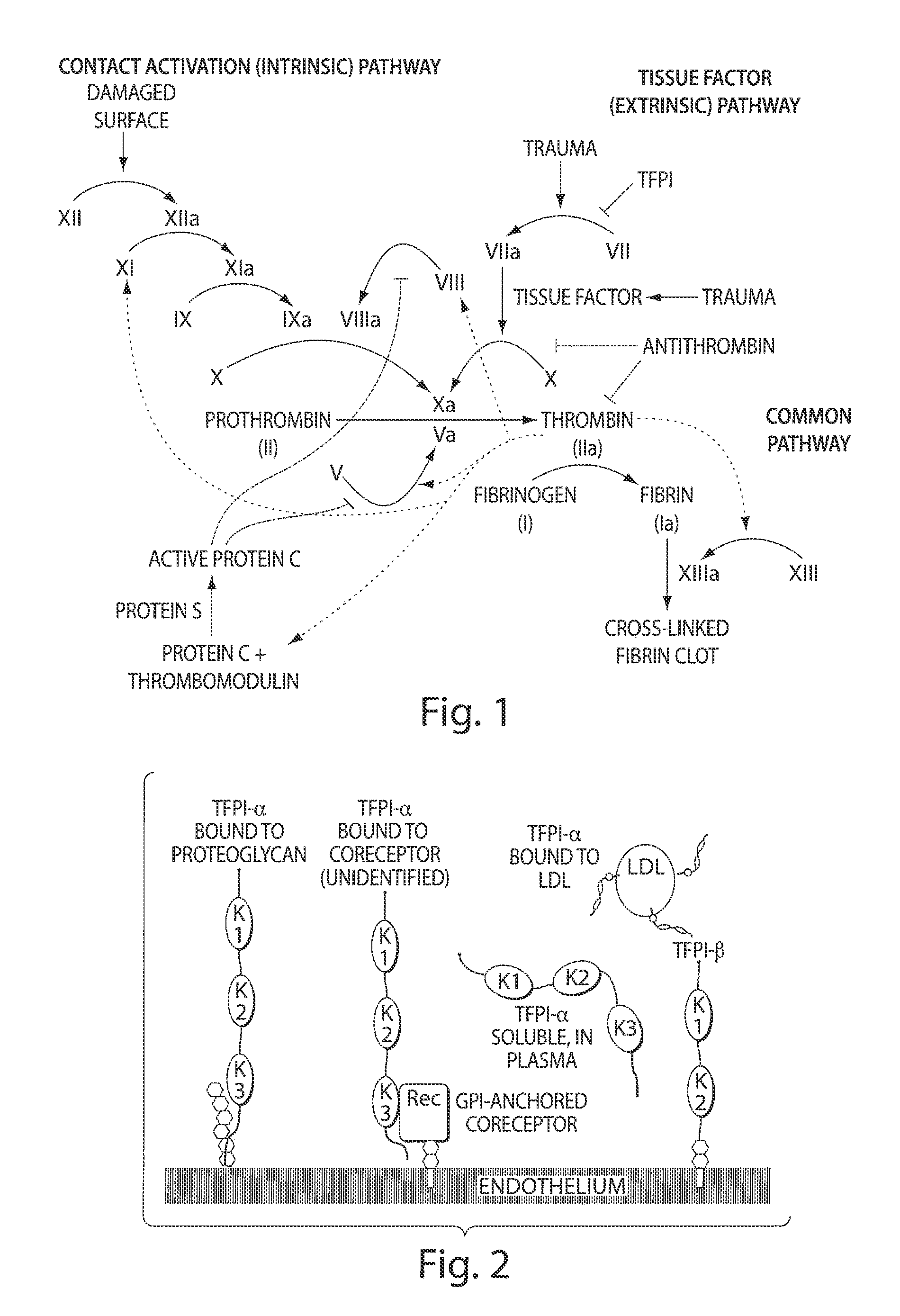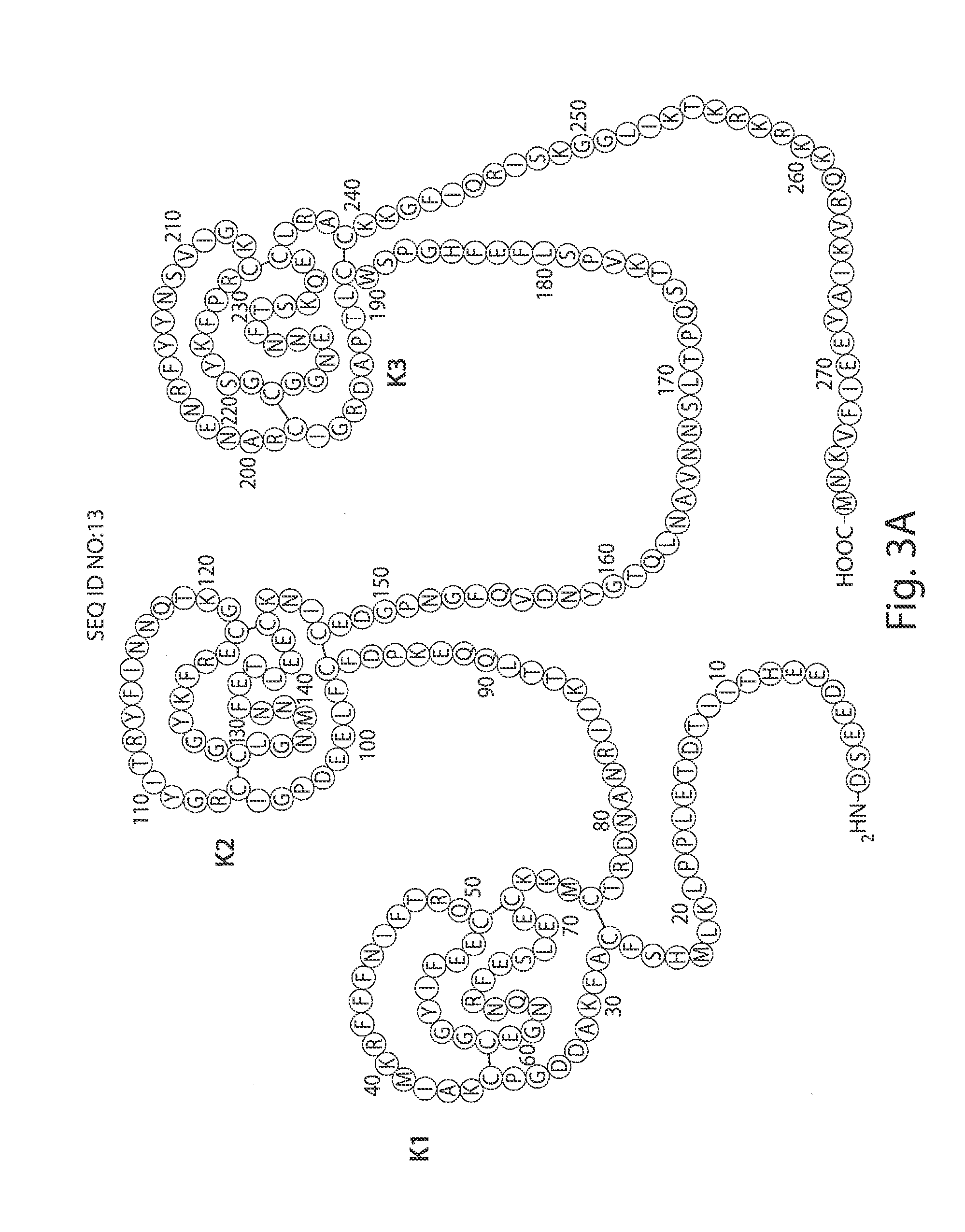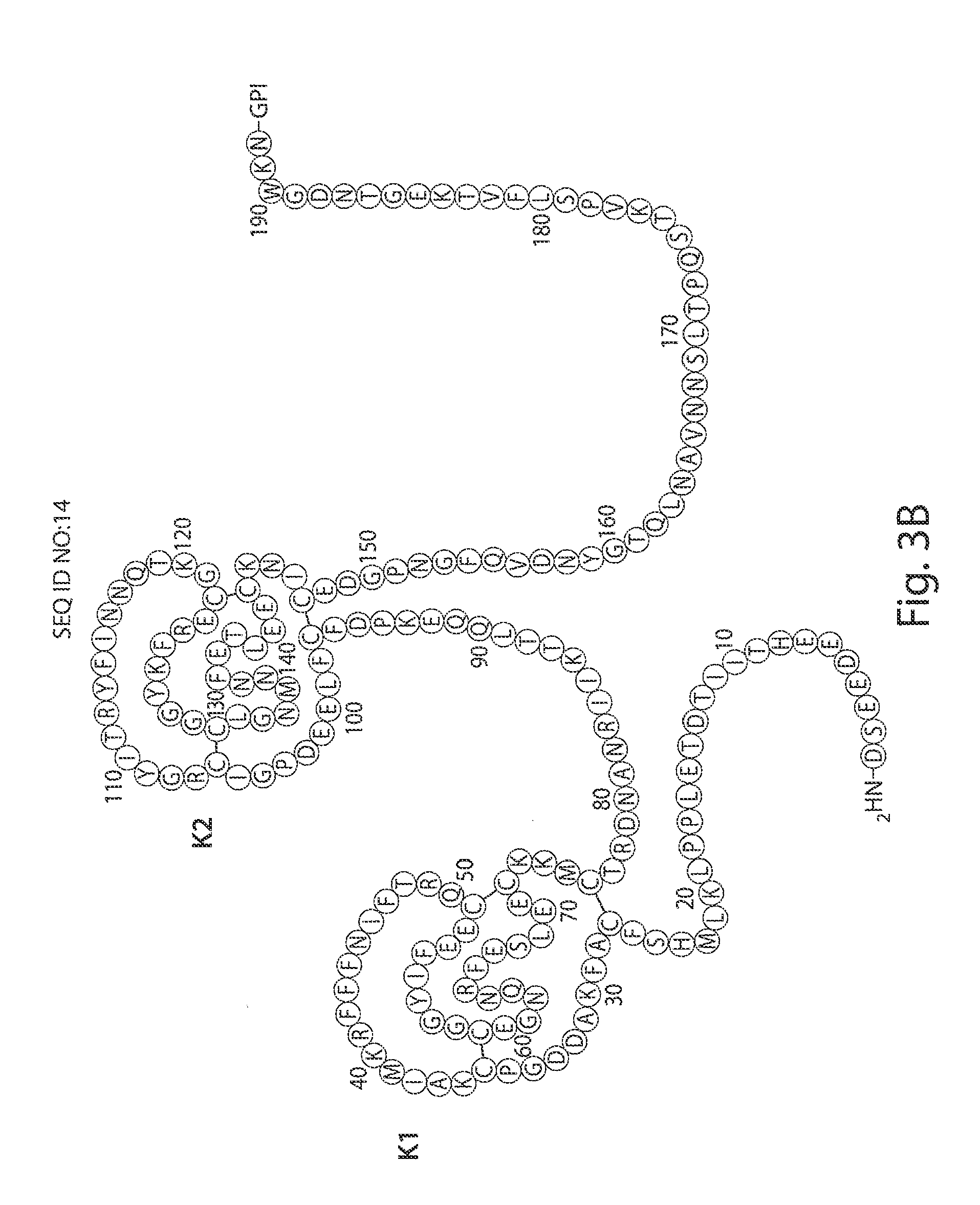Aptamers to tissue factor pathway inhibitor and their use as bleeding disorder thereapeutics
a technology of tissue factor and pathway inhibitor, which is applied in the field of aptamers, can solve the problems of retaining some limitations of concentrates and more highly purified plasma derived factors, relatively short half-life of molecules, and high cost, and achieves the effect of reducing complications or side effects
- Summary
- Abstract
- Description
- Claims
- Application Information
AI Technical Summary
Benefits of technology
Problems solved by technology
Method used
Image
Examples
example 1
[0496]This example demonstrates how ARC19499 was generated.
[0497]In vitro selection experiments were performed using a pool of modified oligonucleotide molecules, each of which contained dC, mA, mG and mU residues, and recombinant human tissue factor pathway inhibitor (TFPI), which was obtained from American Diagnostica (catalog #4500PC, Stamford, Conn.). Iterative rounds of selection for binding to TFPI, followed by amplification, were performed to generate ARC14943, an 84 nucleotide long precursor to ARC19499. ARC14943 was minimized from 84 nucleotides to 32 nucleotides (ARC26835) using computational folding prediction programs and systematic deletion. Appendage of a 3′-inverted deoxythymidine residue to ARC26835 resulted in ARC17480, a 33 nucleotide long molecule. Addition of a 5′-hexylamine group to ARC17480 resulted in ARC19498. This molecule was then PEGylated via the 5′-hexylamine group with a 40 kDa PEG moiety to result in ARC19499.
example 2
[0498]This example demonstrates that ARC17480 binds tightly to TFPI in vitro in a dot-blot binding experiment, in both the absence and presence of competitor tRNA.
[0499]Radiolabeled ARC17480 was incubated with different concentrations of TFPI. ARC17480 bound to TFPI was then captured on a nitrocellulose filter membrane. The ratio of radiolabeled ARC17480 bound to the nitrocellulose filter over total radiolabeled ARC17480 added was determined and plotted as the percentage of ARC17480 bound as a function of protein concentration. An example of an ARC17480 / TFPI binding plot is shown in FIG. 12A. The data were fit to models for monophasic and biphasic aptamer-protein binding. This experiment was repeated eleven times and KDs using both monophasic and biphasic binding models were determined for each data set. The mean KD determined using a monophasic fit was 4.0±1.5 nM and using a biphasic fit was 1.7±0.7 nM. Both monophasic and biphasic fits to the data assume different models for the i...
example 3
[0500]This example demonstrates that unlabeled ARC17480, ARC19498, ARC19499, ARC26835, ARC19500, ARC19501, ARC31301, ARC18546, ARC19881 and ARC19882 compete with radiolabeled ARC17480 for binding to TFPI. This example also demonstrates that all of these aptamers have affinities for TFPI that are similar to that observed with ARC17480.
[0501]Each aptamer was evaluated for binding to TFPI in a binding-competition assay. For these experiments, human TFPI (American Diagnostica, Stamford, Conn., catalog #4500PC) was incubated with trace amounts of radiolabeled ARC17480 and different concentrations of unlabeled competitor aptamer (5000 nM-0.25 nM for all aptamers except ARC19499; 1000 nM-0.05 nM for ARC19499). For experiments with ARC17480 and ARC19499 in FIG. 13A, 60 nM TFPI was used. For all other experiments (FIG. 13B-E), 10 nM TFPI was used. ARC17480 was included as a competitor in every experiment as a control. For each aptamer, the percentage of radiolabeled ARC17480 bound at each co...
PUM
 Login to View More
Login to View More Abstract
Description
Claims
Application Information
 Login to View More
Login to View More - R&D
- Intellectual Property
- Life Sciences
- Materials
- Tech Scout
- Unparalleled Data Quality
- Higher Quality Content
- 60% Fewer Hallucinations
Browse by: Latest US Patents, China's latest patents, Technical Efficacy Thesaurus, Application Domain, Technology Topic, Popular Technical Reports.
© 2025 PatSnap. All rights reserved.Legal|Privacy policy|Modern Slavery Act Transparency Statement|Sitemap|About US| Contact US: help@patsnap.com



